Written by Leah Marie, 21 December 2021.
Return to the main page.
As you travel throughout Connecticut, particularly (in my experience) Fairfield County, you will notice that many towns - small towns - feature numerous colonial and antebellum cemeteries (cemeteries with stones that date prior to the Civil War). Connecticut was inhabited by Europeans early in our nation's history (the first settelments can be traced to 1630) and the state became a crown colony in 1662. Smaller towns, not far from Long Island Sound and New York City, boast numerous burial grounds with interments dating to the 1700s. In the case of the city of Milford (whose land was purchased from the Paugussett Indians in 1639), tombstones can be found dating from the late 1600s (photos, below). Smaller towns, such as Newtown (founded in 1705), Redding ("purchased" in 1668) and Trumbull (settled by the English in 1639) feature multiple cemeteries with stones dating from the 18th and early 19th centuries. (As a count, Newtown has ten cemeteries with burials dating from the 1700s, Redding boasts nine and Trumbull has eight.)
Tombstones from Old Milford Cemetery, dating
from the late 1600s.
For additional information and inscriptions,
visit Old Milford's page.
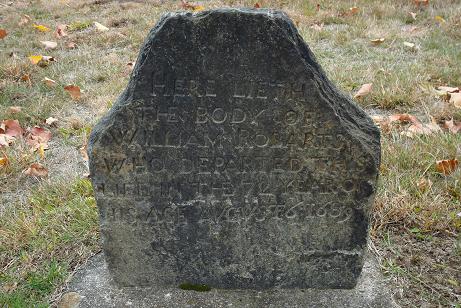

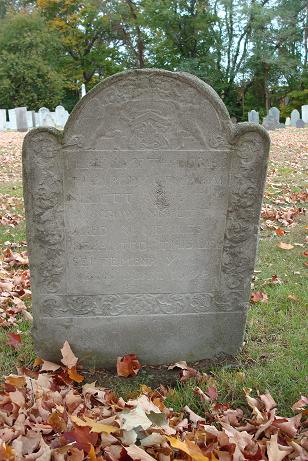
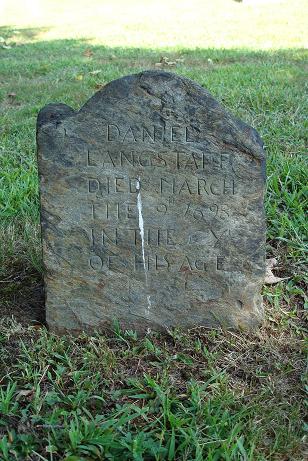

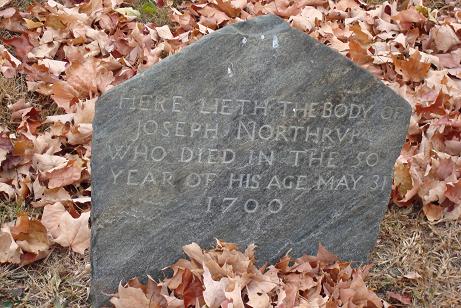

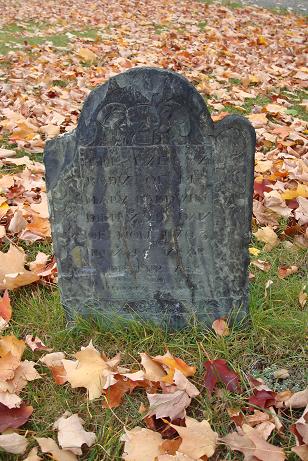
But where are Bridgeport's "old" cemeteries?
Bridgeport is Connecticut's most populous city (and the fifth-most populous in New England), and the earliest recorded European settlement in what is now Bridgeport was established in 1644. With such a long history and large population, the city should be teeming with cemeteries. Yet only six are known to exist in the entire city (one - St. James - is so neglected, it survives as a random field with one standing stone). Of these six cemeteries, only one has interments dating prior to the Civil War (two, if you count St. James, which originally contained graves from the 1840s forward). So where are Bridgeport's early settlers?

A view of Old Stratfield Cemetery
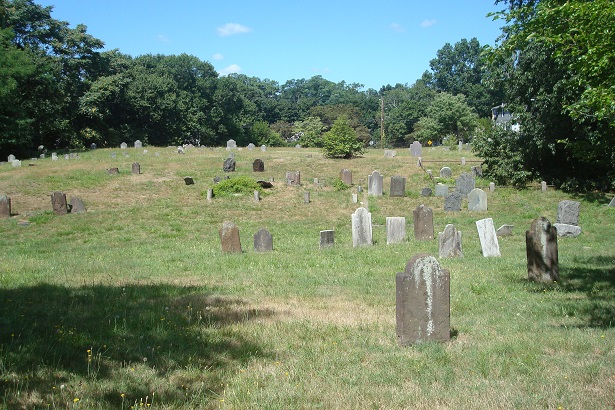
As stated, there is one colonial cemetery remaining in Bridgeport - Old Stratfield Cemetery. It has multiple stones from the mid-1700s, with a few dating from the early 1700s (and one from 1698) but erected at a later date. Yet how can one, relatively small, burial ground account for all the citizens to inhabit the state's largest (and for a time, most important, city) for almost two centuries?

The entrance gate of Old Stratfield Cemetery:
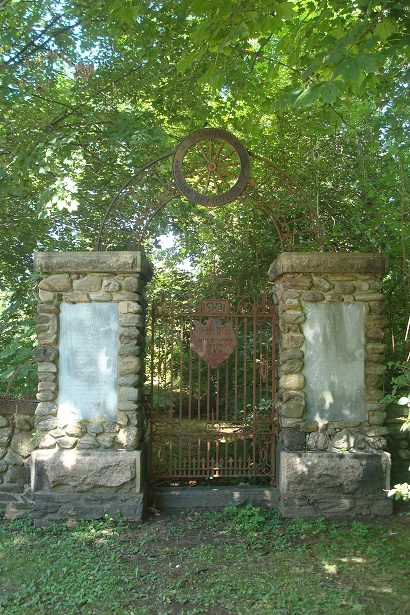
The truth of the matter is both shocking and appalling. It is a tale of greed, defilement, disrespect and horror. And its featured perpetrator is none other than arguably Bridgeport's most famous resident, P.T. Barnum (who is buried in Mountain Grove Cemetery. More on that, later.)
Phineas Taylor ("P.T.") Barnum was a showman, entrepreneur and politician. He was a member of the Connecticut House of Representatives (1866-1869) and mayor of Bridgeport for one year (1875-1876). Barnum's main motivation in life seeemed to be making a fast buck. He created a museum of curiosities that displayed everything from a former slave who supposedly was George Washington's 161-year-old "mammy", to the "FeeGee" Mermaid - a monkey head and torso attached to a fish's tail end. Some of Barnum's endeavors were slightly more legitimate and profitable, as when he toured the world with "General Tom Thumb", Charles Stratton (2 feet, 11 inches at the age of 21 - buried opposite Barnum in Mountain Grove) or when he established what would eventually become known as "The Barnum & Bailey Circus".
Barnum proved that he was willing to do whatever it took to turn a profit, without regard for ethics or conscience. When he decided to develop more of the city of Bridgeport, he didn't let the matter of a few old cemeteries get in his way. He simply "relocated" them, to put it very, very nicely.
It is local legend that Barnum demolished old cemeteries, only occasionally relocating the bodies and accomplishing this process in a gruesome, haphazard way. Many stones were destroyed or "repurposed". It is rumored that of the several houses Barnum owned throughout the city (none of which still exist), Barnum often utilized old tombstones to pave his basements. The story is a gruesome one, and a documented example of this fiendish activity is provided, below.
In July of 1873, Barnum, through his influence, was able to "close" the Bridgeport and Stratfield Burying Ground (dating from roughly 1811; not to be confused with the still-standing Old Stratfield Cemetery, above). The last of approximately 4,000 burials occurred during the 1850s. The cemetery, when it was established, was considered out of the way and far from the center of the city. As the city expanded, the cemetery ended up surrounded by businesses on what is now a main road (today's Park Avenue). It is no coincidence that Barnum owned land adjacent to the cemetery.
In the early 1870s, it is estimated that half of the plot owners transferred their final resting places to the newer Mountain Grove Cemetery (incidentally, established by Barnum in 1849). David W. Sherwood, a Barnum associate, agreed to pay the costs of transferring the remaining graves in return for ownership of the land. As it turns out, Sherwood was unable to cover the costs, so Barnum offered Sherwood financial support - in exchange for half the property. Many residents were upset with the removals. Some disliked the idea of having the peace of their deceased ancestors disturbed. Even more people were aghast at how the task was undertaken.

The Bridgeport and Startfield Burying Ground,
as shown on a map from the 1870s
Notice the vast area of land the
cemetery covered, and imagine the number of
bodies that were surely interred there.
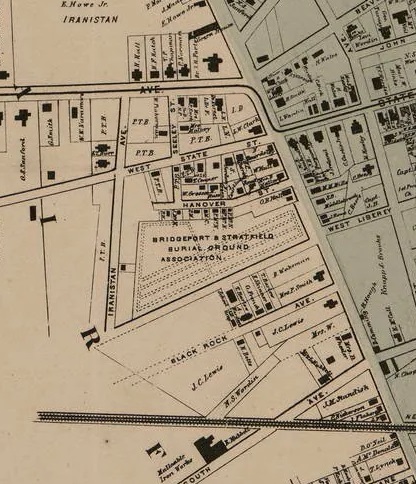
In his book, Wicked Bridgeport, Michael J. Bielawa writes, "Barnum hired George Poole, a retired butcher. . .to oversee the exhumation and transport of earthly remains and monuments. Bridgeport resident Julian H. Sterling, a longtime correspondent of The New York World. . .expounded on how indecently the old cemetery was treated: 'The dead were taken up in cartloads and carried, mostly at night time, to another resting place. The bodies were reburied in the far side of Mountain Grove cemetery, monuments were broken, headstones replaced, and in many instances headstones were utilized for flagging side-walks about town.'. . .An anonymous 1897 New York Sunday World article detailed how 'sixteen and twenty [bodies] at a time were loaded on trucks and in broad daylight hauled by horses through the streets . . .Many of the graves were so old that the coffins were decayed or entirely gone. Some burst open and bones were scattered along the causeway.'"
The now defunct cemetery was transformed into a middle class neighborhood. But the removal of bodily remains was performed so erratically, that skeletal remnants were routinely discovered whenever street repairs were conducted in the area. According to Bielawa, "Throughout the closing decades of Bridgeport's nineteenth century, local newspapers commonly reported coffins, bones and broken headstones being exposed. Portions of city sidewalks, uprooted as recently as 1982 and 2000, have turned out to be inverted gravestones likened to the unethical practices of Mr. Poole." And P.T. Barnum. (Incidentally, both Barnum and Poole are interred within Mountain Grove Cemetery.)
All photos copyright by the author, 2020. Not to be used or reproduced without permission.
Return to the main page.